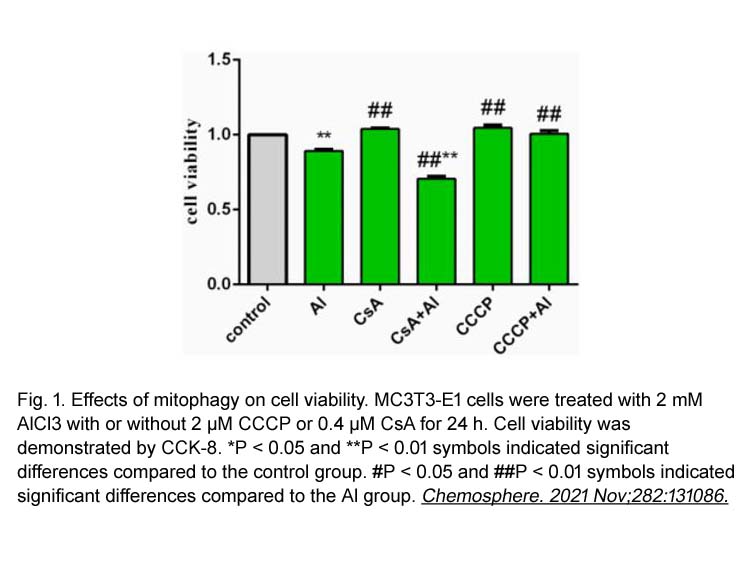Cyclosporin A
Cyclosporin A (CAS 59865-13-3)is an immunosuppressive agent acting primarily through inhibition of cyclophilins, intracellular peptidyl-prolyl isomerases, with a reported IC50 of 7 nM. Cyclophilins regulate mitochondrial permeability transition pore (MPTP) opening, intracellular calcium signaling, and NFAT transcriptional activation pathways. Cyclosporin A's ability to inhibit calcineurin-NFAT signaling in T-cell activation leads to suppression of inflammatory immune responses, indicating potential use in autoimmune disorder research. Additionally, it modulates cell apoptosis and survival mechanisms in diverse models, including retinal ischemic injury, viral entry (HBV, HCV), and tumor biology in colon cancer cell lines.
References:
[1]. Minguillon, J., et al., Concentrations of cyclosporin A and FK506 that inhibit IL-2 induction in human T cells do not affect TGF-beta1 biosynthesis, whereas higher doses of cyclosporin A trigger apoptosis and release of preformed TGF-beta1. J Leukoc Biol, 2005. 77(5): p. 748-58.
[2]. Kim, S.Y., et al., Inhibition of cyclophilin D by cyclosporin A promotes retinal ganglion cell survival by preventing mitochondrial alteration in ischemic injury. Cell Death Dis, 2014. 5: p. e1105.
[3]. Du, M.R., et al., Cyclosporin A promotes growth and invasiveness in vitro of human first-trimester trophoblast cells via MAPK3/MAPK1-mediated AP1 and Ca2+/calcineurin/NFAT signaling pathways. Biol Reprod, 2008. 78(6): p. 1102-10.
[4]. Gao, J., et al., Mitochondrial permeability transition pore in inflammatory apoptosis of human conjunctival epithelial cells and T cells: effect of cyclosporin A. Invest Ophthalmol Vis Sci, 2013. 54(7): p. 4717-33.
[5]. Nkongolo, S., et al., Cyclosporin A inhibits hepatitis B and hepatitis D virus entry by cyclophilin-independent interference with the NTCP receptor. J Hepatol, 2014. 60(4): p. 723-31.
[6]. Werneck, M.B., et al., Cyclosporin A inhibits colon cancer cell growth independently of the calcineurin pathway. Cell Cycle, 2012. 11(21): p. 3997-4008.
- 1. Fatma Gonca Kocanci, Hamiyet Eciroglu Sarban, et al. "Evaluating the Neuroprotective and Acetylcholinesterase Inhibitory Properties of Four Calcineurin Inhibitor Drugs: Tacrolimus, Pimecrolimus, Cyclosporin A, and and Voclosporin." Mol Neurobiol 15 September(2025)
- 2. Pravin B Sehgal, Huijuan Yuan, et al. "Oral Antiviral Defense: Saliva- and Beverage-like Hypotonicity Dynamically Regulate Formation of Membraneless Biomolecular Condensates of Antiviral Human MxA in Oral Epithelial Cells." Cells. 2024 Mar 28;13(7):590 PMID: 38607029
- 3. Hui Gong, Ting Wang, et al. "Fibroblasts facilitate lymphatic vessel formation in transplanted heart." Theranostics. 2024 Feb 24;14(5):1886-1908. PMID: 38505621
- 4. Nan Jia, Guo Li, et al. "Staphylococcal superantigen-like protein 10induces necroptosis through TNFR1 activation ofRIPK3-dependent signal pathways." Commun Biol. 2022 Aug 12;5(1):813. PMID: 35962126
- 5. Pengli Liu, Yilong Cui, et al. "Protective effect of mitophagy against aluminum-induced MC3T3-E1 cells dysfunction." Chemosphere. 2021 Nov;282:131086. PMID: 34119729
- 6. Weiwei Qin, Xiyang Tong, et al. "Preservation of mitochondrial homeostasis is responsible for the ameliorative effects of Suhuang antitussive capsule on non-resolving inflammation via inhibition of NF-κB signaling and NLRP3 inflammasome activation." J Ethnopharmacol. 2021 May 10;271:113827. PMID: 33460751
- 7. Zheng ZW, Li J, et al. "Evaluation of in vitro antileishmanial efficacy of cyclosporin A and its non-immunosuppressive derivative, dihydrocyclosporin A." Parasit Vectors. 2020;13(1):94. Published 2020 Feb 21. PMID: 32085719
- 8. Yang YL, Li J, et al. "Ginsenoside Rg5 increases cardiomyocyte resistance to ischemic injury through regulation of mitochondrial hexokinase-II and dynamin-related protein 1." Cell Death Dis. 2017 Feb 23;8(2):e2625. PMID: 28230856
| Physical Appearance | A solid |
| Storage | Store at -20°C |
| M.Wt | 1202.61 |
| Cas No. | 59865-13-3 |
| Formula | C62H111N11O12 |
| Synonyms | Cyclosporine, Ciclosporin |
| Solubility | ≥119.4 mg/mL in DMSO with ultrasonic; insoluble in H2O; ≥101.4 mg/mL in EtOH |
| Chemical Name | (3S,6S,9S,12R,15S,18S,21S,24S,30S,33S)-30-ethyl-33-((1R,2R,E)-1-hydroxy-2-methylhex-4-en-1-yl)-6,9,18,24-tetraisobutyl-3,21-diisopropyl-1,4,7,10,12,15,19,25,28-nonamethyl-1,4,7,10,13,16,19,22,25,28,31-undecaazacyclotritriacontan-2,5,8,11,14,17,20,23,26,29 |
| SDF | Download SDF |
| Canonical SMILES | O=C(N[C@@](C(N([C@@H](CC(C)C)C(N[C@H](C(N[C@@H](C(N([C@@](C(N(C)[C@H](C(N(C)[C@](C(C)C)([H])C(N([C@]([C@H](O)[C@@H](C/C=C/C)C)([H])C(N[C@H]1CC)=O)C)=O)=O)CC(C)C)=O)([H])CC(C)C)C)=O)C)=O)C)=O)C)=O)([H])C(C)C)[C@@H](N(C(CN(C)C1=O)=O)C)CC(C)C |
| Shipping Condition | Small Molecules with Blue Ice, Modified Nucleotides with Dry Ice. |
| General tips | We do not recommend long-term storage for the solution, please use it up soon. |
| Cell experiment [1]: | |
|
Cell lines |
Jurkat T cells and A549 lung carcinoma cells |
|
Preparation method |
The solubility of this compound in DMSO is >60.2 mg/mL. General tips for obtaining a higher concentration: Please warm the tube at 37℃ for 10 minutes and/or shake it in the ultrasonic bath for a while. Stock solution can be stored below -20℃ for several months. |
|
Reacting condition |
1 μM, 24h |
|
Applications |
Pretreatment of fresh T cells with CsA during primary TCR stimulation decreased their production of TGF-β1 during secondary stimulation. Higher concentrations of CsA (10 μM) promoted the release of preformed TGF-β1 by inducing apoptosis. |
| Animal experiment [2]: | |
|
Animal models |
Female retinal ischemia C57BL/6 mouse model |
|
Dosage form |
Intraperitoneal injection, 5 mg/kg per day |
|
Application |
CsA significantly promoted RGC survival in ischemic retina. CsA treatment significantly decreased GFAP and CypD protein expression in ischemic retina at 12 h. CsA treatment decreased CypD immunoreactivity in the inner layer of ischemic retina. |
|
Other notes |
Please test the solubility of all compounds indoor, and the actual solubility may slightly differ with the theoretical value. This is caused by an experimental system error and it is normal. |
|
References: [1]. Minguillón J, Morancho B, Kim S J, et al. Concentrations of cyclosporin A and FK506 that inhibit IL-2 induction in human T cells do not affect TGF-β1 biosynthesis, whereas higher doses of cyclosporin A trigger apoptosis and release of preformed TGF-β1[J]. Journal of leukocyte biology, 2005, 77(5): 748-758. [2]. Kim S Y, Shim M S, Kim K Y, et al. Inhibition of cyclophilin D by cyclosporin A promotes retinal ganglion cell survival by preventing mitochondrial alteration in ischemic injury[J]. Cell death & disease, 2014, 5(3): e1105. |
|
Quality Control & MSDS
- View current batch:
Chemical structure

Related Biological Data

Related Biological Data

Related Biological Data

Related Biological Data

















